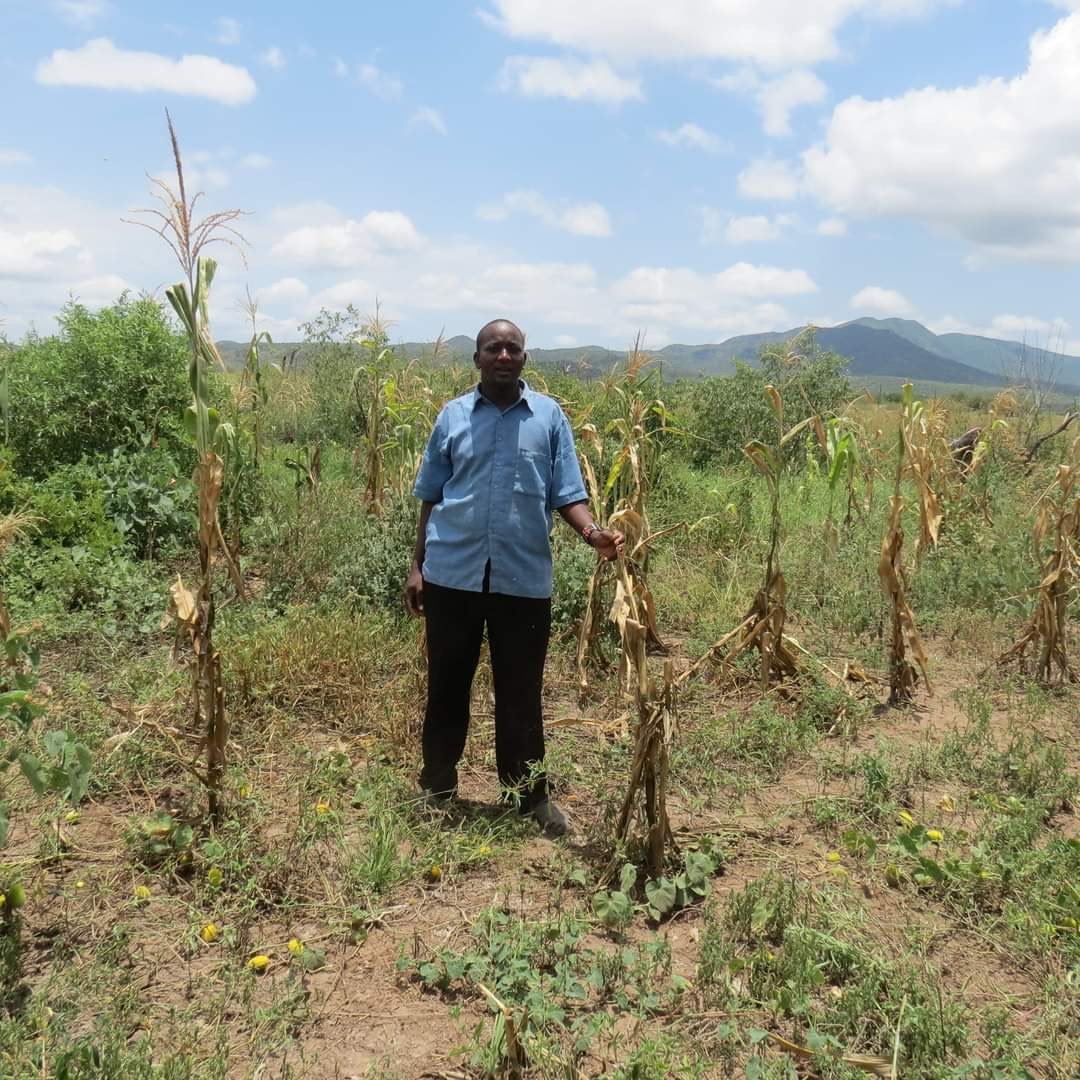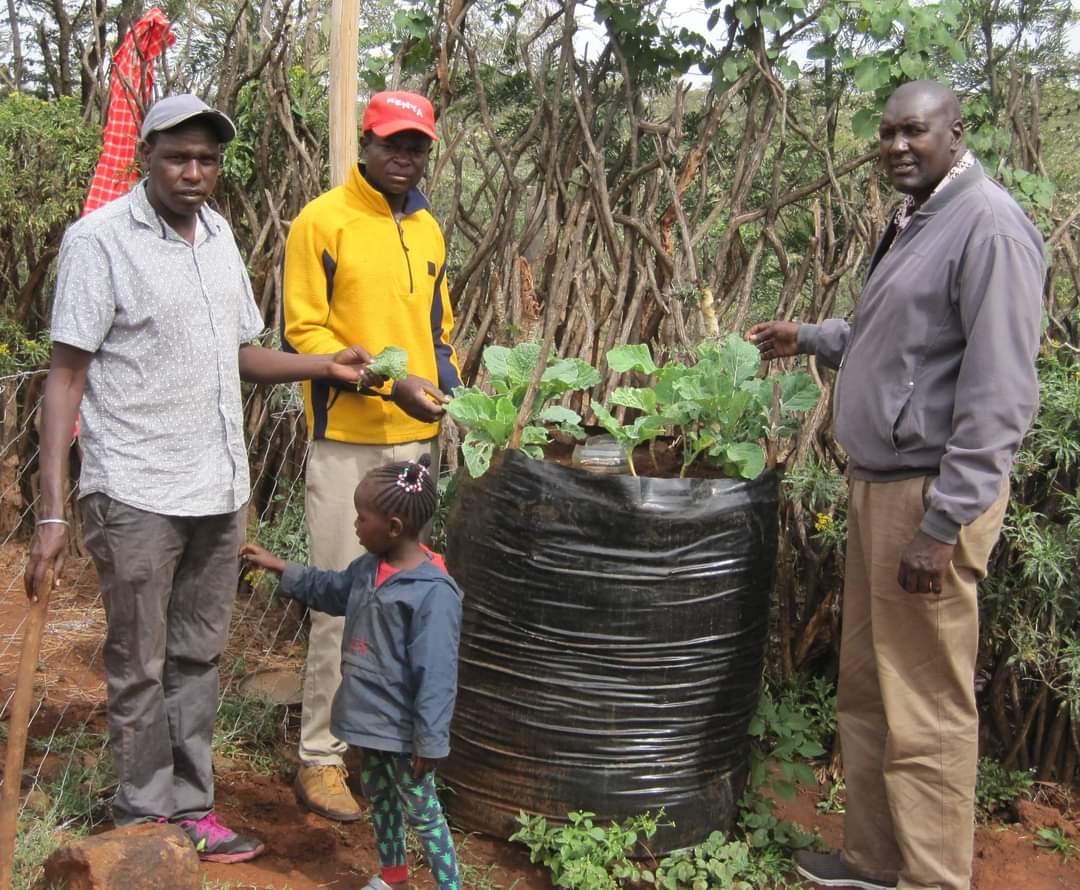23: Gardening in a Drought
Kenya
A Climate Pollinator story by Sierra Ross Richer
Like most Maasai people in Kenya, Joel Lankas grew up raising cattle, not growing plants. But at his new home in Kimuka, Kajiado, he grows both vegetables and trees.
“The population (in Kenya) is growing every day,” Joel said. “Since there is no place to graze livestock and cities are (encroaching on) villages, people now are shifting to other alternatives, including myself.”
A severe three-year drought, the last in a series of dry spells experienced in Kenya over the last few decades, has made cattle raising much harder. The lack of rain means the grasses cows need to eat don’t grow. In addition, human development on pasturelands means there’s less room for herds to roam. Instead, Joel and others are picking up farming.
At his home, Joel has a garden with kale, spinach and onions. He waters his plants with water from a well. But many living in the communities around him don’t have that option.
“Water is a really big challenge,” Joel said. Many of the people he works with in his role as field officer for Maasai Integrated Development Initiatives (MIDI), rely on seasonal rivers for their water. Because of the drought, many now have to buy water from trucks that sell it.
“They don’t have an alternative to get water,” Joel said.
With water so scarce, how do people grow food? MIDI teaches some water-conserving techniques in its self-help groups.
One option is to plant a sack garden. This involves planting vegetables like kale in large feed sacks that can be placed in the shade near people’s houses. Because the water is contained in the bag, it isn’t lost as quickly.
Another technique, called a sunken bed, uses mulch and grass mixed into the soil to retain water. “When you water it, you put grass on top so that the evaporation will be minimal,” Joel explained.
In addition to giving lessons on growing vegetables, Joel encourages people to plant trees.
“Trees will improve the soil fertility,” he said, “they will also conserve the soil, they prevent soil erosion, (and) they are wind breakers.”
When Joel moved to Kimuka in 2018, he planted 30 trees in his compound, including a number of native tree species.
“They are very big now,” Joel said.
The grevillea trees he planted provide leaves he can feed to his livestock, and that’s only one of the benefits he’s reaping:
“My home is cool, and we come from a really hot place,” Joel said. “(And) my home is beautiful, there is no dust when it is windy like now.”
Photos



